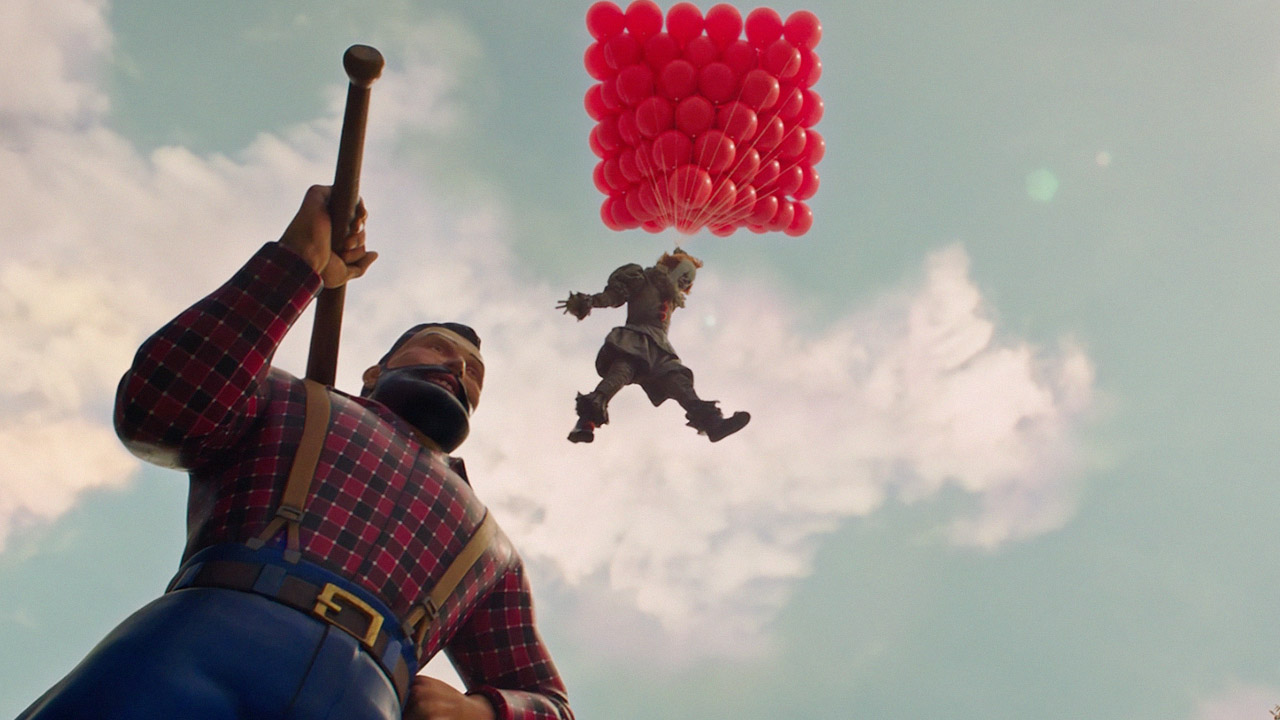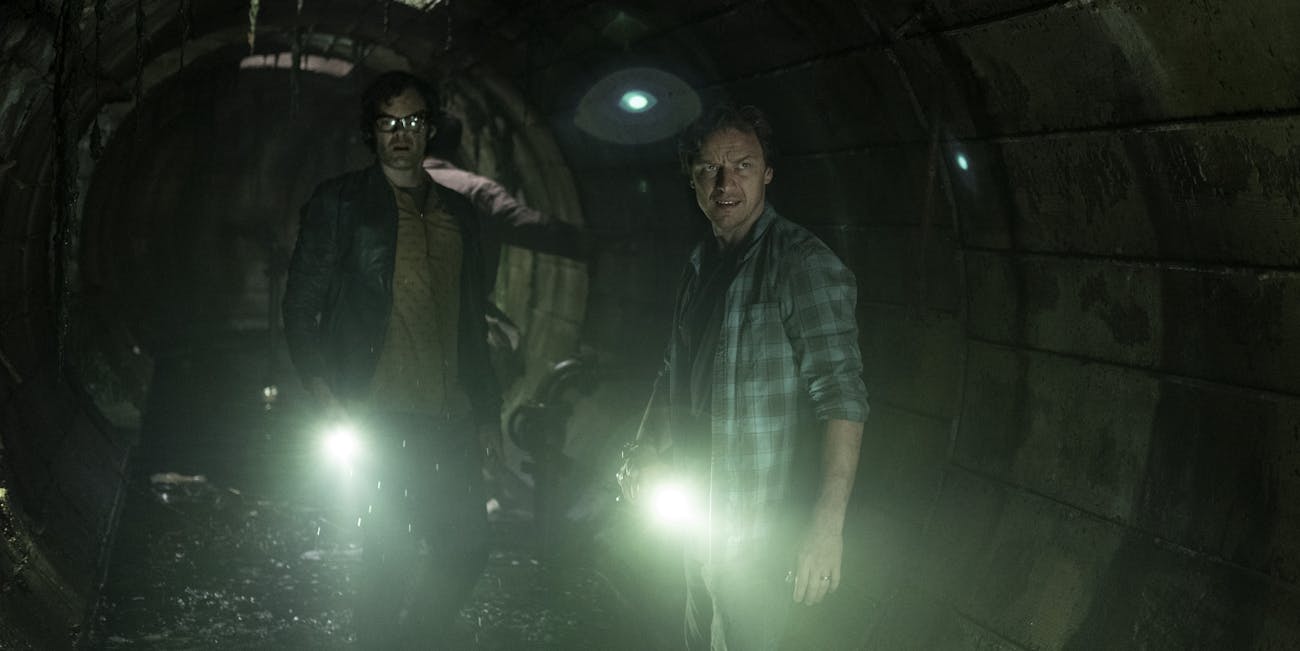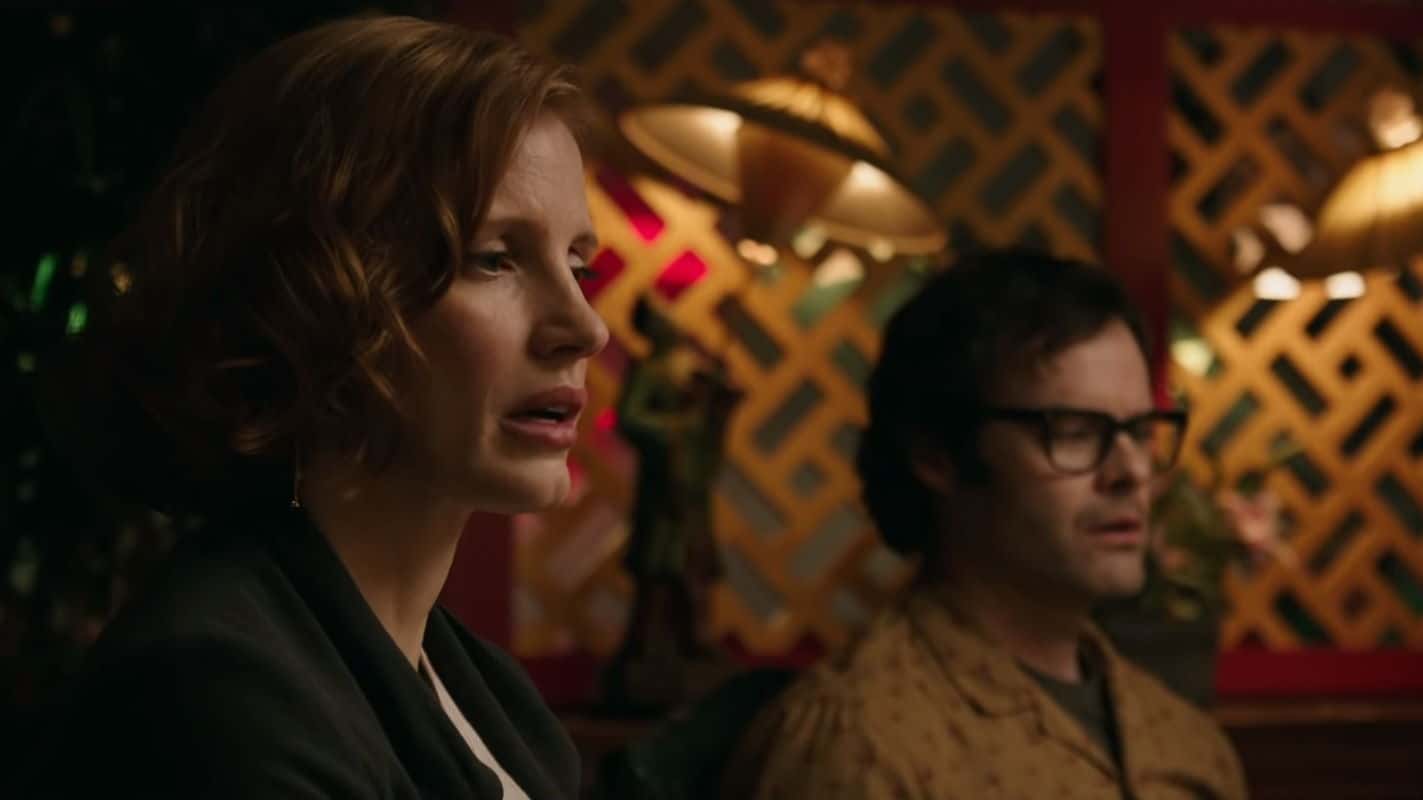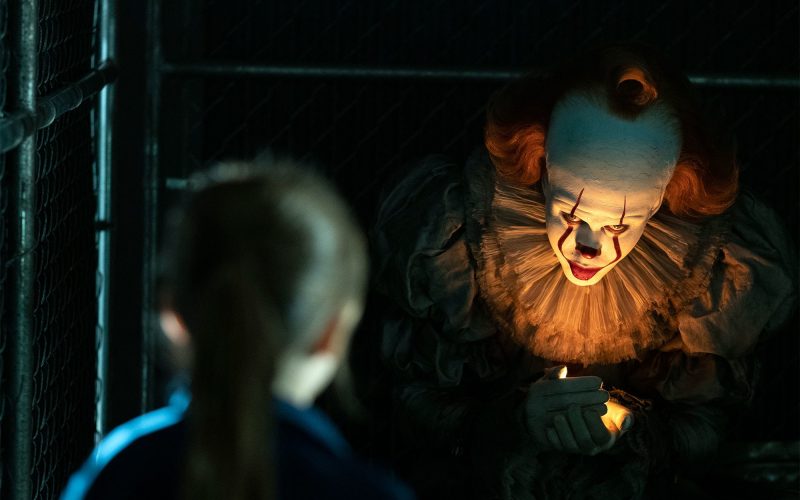It: Chapter Two (2019).
Side quests punctuate part two of Andy Muschietti’s effort to adapt Stephen King’s monstrous 1986 novel, detours that are superfluous in a story that’s thinner than it’s pretending to be. These are self-inflicted wounds that maim a rather straightforward narrative, fortunately without resulting in too much scarring to an otherwise strong thriller.
For a sequel to a film for which its highlight was the dynamics between the various members of its young cast, and for a film that assembles such a perfect adult cast to match, the moments spent with the group as a whole are few and far between. Instead, each character has his or her own personal journey through the town of Derry, side-steps that occupy plenty of the film’s territory and expend a lot of its energy. These quests are at best riveting and revealing and at worst monotonous and redundant.

Take Bill Denbrough for instance, played in adulthood by James McAvoy, and whose arc involves the acceptance of his younger brother’s tragic fate in the first film. It: Chapter Two compliments this by addressing the subsequent guilt and having him confront his own role in Georgie’s death. This is one of the better uses of the film’s laborious structure, but not all characters are equal and the sprawling nature of the story means even the strongest threads are under-emphasised. Whether it’s in the quality of writing or quantity of screen-time, some characters lack where others are enlivened.
There’s enough to like about these individual threads, which are essential to a Native American ritual that Mike Hanlon (Isaiah Mustafa as the only member of the group to remain in Derry) claims will help them to purge the world of Pennywise the Dancing Clown. This ritual requires each character to acquire a “totem,” something intrinsic to the experiences they had twenty-seven years prior when Pennywise first terrorised them. This string of sequences allows for the return of the first film’s crowd-pleasing cast, but that choice is detrimental to its pacing.

Beverly Marsh (Sophia Lillis and, later, Jessica Chastain) experiences a particularly frightening trip to the childhood home she shared with her abusive father (Bev since goes on to marry an abuser, one of many overt parallels to the characters’ youths). Richie Tozier (Finn Wolfhard), though, and particularly Bill Hader’s performance as the adult version, is the film’s highlight outside of Bill Skarsgard’s instantly iconic turn as the villainous clown. Oblique though the revelations about Richie are (some viewers in my theatre remained oblivious to the connotations), they make for some weighty material that Hader is more than capable of handling.
And yet comparatively the film gets too side-tracked with quasi-development and cyclic storytelling. Ben Hanscom (Jeremy Ray Taylor and Jay Ryan) and Eddie Kaspbrak’s (Jack Dylan Grazer and James Ransone) journeys are tedious and cover little new ground. These characters more closely resemble caricatures, the latter of which in particular is a voice box for much of the film’s comedy that only undercuts the tension and terror that might otherwise have peaked at more dramatic heights. One of the film’s best scenes sees the group reunited, as though no time has passed at all. The youthful banter between old friends subsides suddenly and effectively when the reason for the reunion comes to the fore. Unfortunately distraction rears its ugly head too often in a film that’s so good often enough that its lacklustre moments stand out. Separating the ensemble proves damaging and the cuts between past and present become predictable.

But at its best Chapter Two is as good as any other recent horror flick. It kicks off with a scene ripped straight from the book, following a couple that becomes victim to an upsetting hate crime. Difficult to watch though it is, it also marks our first look at Pennywise since his twenty seven-year hibernation. Purists might argue that the scene is essential but it’s hard to see its thematic relevance in the film apart from giving us a sense of time and place that doesn’t really seem to matter; Derry plays a more prominent role in the first film than it ever does here. Regardless, it marks a strong re-introduction to the villain with an unsettling, macabre quality that only returns once or twice more. His ability to manipulate is just as frightening as his ability to, well, frighten, as in a hair-raising scene that shrouds him in shadows while he preys on a child. It’s a shame we don’t get more of this.
For all of its flaws, including an elongated final act that succumbs to a climactic battle that’s kind of overcompensating, there’s vehemence behind the desperate plight of its heroes. The group’s triumphs are earned and the love and loss shared between its members is particularly resonant. There’s something endearing about a story delivered as a complete, two-part package, where the time invested feels worth the payoff. It: Chapter Two is a wild ride and, while this hallway of horrors isn’t always as scary or scintillating as it could be, you won’t stop waiting for, and wondering with a perverse kind of glee, what’s waiting around each new corner.

Film ’89 Verdict – 7/10
It: Chapter Two is on general theatrical release now.

